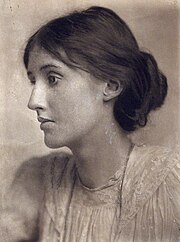Virginia Woolf's Human Design Chart
4/6 Splenic Projector**Virginia Woolf: A Human Design Perspective**
Virginia Woolf, born on January 25, 1882, in London, England, was a British writer celebrated for her profound contributions to literature as a novelist and essayist. As a Projector in Human Design, Woolf’s creative process was deeply influenced by her strategy of “Waiting for the Invitation,” which shaped her interactions and collaborations, particularly within the influential Bloomsbury Group, a literary circle she co-founded after the death of her father in 1904.
Woolf’s upbringing was a blend of privilege and trauma. As the youngest of four children from her father’s second marriage, she navigated a complex family dynamic with a total of eight siblings. Her education at home allowed her access to her father’s extensive library, fostering her literary talents from an early age. Woolf’s writing journey began with more traditional novels, but in 1921, she transitioned to an experimental, impressionistic style that would come to define her later works.
Her notable novels, including “Jacob’s Room” (1922), “Mrs. Dalloway” (1925), and “To the Lighthouse” (1927), showcased her innovative narrative techniques and deep psychological insights. These works were guided by her Splenic Authority, which informed her intuitive decision-making and heightened sensitivity to her surroundings. Woolf’s 4/6 Profile reflects her dual nature: the 4th line emphasizes her role as a networker and friend, while the 6th line represents a journey of personal evolution and wisdom gained through lived experiences. This dynamic is evident in her relationships, particularly her deep companionship with her husband, Leonard Woolf, and her passionate affair with Vita Sackville-West.
Despite the complexities of her personal life, including a sexless marriage and struggles with mental health, Woolf’s writing served as both an outlet and a means of confronting her inner turmoil. The Right Angle Cross of The Unexpected (41/31 | 28/27) in her Incarnation Cross signifies her role in challenging societal norms and expectations through her literary work. Her essays, especially “A Room of One’s Own” (1929), became foundational texts in feminist literature, advocating for women’s independence and creative freedom.
Woolf’s hypersensitivity to criticism and her experiences with mental health crises, including a breakdown during World War I, fueled her exploration of themes such as life, death, and madness. In addition to her literary achievements, she co-founded the Hogarth Press with Leonard in 1917, where they published works by prominent authors like T.S. Eliot and Gertrude Stein. The press became a platform for Woolf to express her social concerns, addressing issues of feminism, race, and peace through literature.
Tragically, Woolf’s struggles culminated in her decision to end her life on March 28, 1941, fearing the recurrence of her mental health challenges. Despite her untimely death, her legacy endures through her influential works and the profound impact she had on modern literature and feminist thought. Virginia Woolf remains a pivotal figure, not only for her literary contributions but also for her unique Human Design, which shaped her creative expression and personal journey. Her channels, 43-23 and 16-48, further illustrate her ability to articulate profound insights and connect deeply with the human experience.
In December 2002, her life was poignantly portrayed in the film “The Hours,” based on Michael Cunningham’s award-winning novel, further solidifying her status as an enduring literary icon.
Discover More Famous People
Browse and analyze over 55,000 public figures and celebrities.
Ra Uru Hu
5/1 Manifestor
Martha Stewart
4/6 Manifestor
David Lynch
4/6 Generator
Barack Obama
6/2 Projector
Steve Jobs
6/3 Generator
Vladimir Putin
5/1 Manifestor
Kim Kardashian
3/5 Generator
Michael Jackson
1/3 Projector
Marilyn Monroe
6/2 Projector
Ariana Grande
2/4 Projector
Oprah Winfrey
2/4 Generator
Johnny Depp
2/4 ManifestorWhat is HumanDesign.ai and how does it work?
Curious what makes Virginia Woolf tick? HumanDesign.ai instantly maps their exact birth data into a fully interactive clickable bodygraph chart, letting you hover or tap every center, channel, and gate for plain-language explanations. Bella, the platform’s built-in AI guide, adds context in real time, translating complex mechanics into everyday insights so you can see how Virginia Woolf’s strengths, challenges, and life themes play out on-screen.
The same tools are waiting for you. Generate your own Human Design Chart in seconds, open a library of 2000+ suggested questions, and chat with Bella as often as you like to decode your design, daily transits, and even relationship dynamics.
Want to compare energies? Save unlimited charts for friends, family, or clients, then ask Bella to reveal compatibilities, composite patterns, or coaching tips, all in one conversation thread.
Start free with core features, or unlock our Personal and Pro plans for deeper dives: unlimited Q&A, celebrity chart search spanning 55,000+ public figures, white-label PDF reports, branded content generation, and a professional profile with built-in booking for practitioners. Whether you’re exploring your own potential or guiding others, HumanDesign.ai delivers an ever-expanding toolbox of AI-powered insights—no spreadsheets, no jargon, just clarity at your fingertips.
Ready to see yours? Signup for FREE today!

